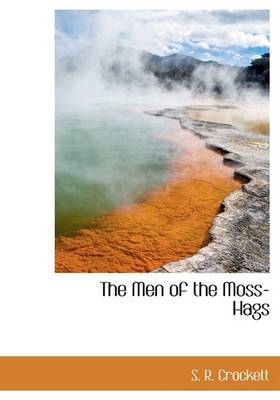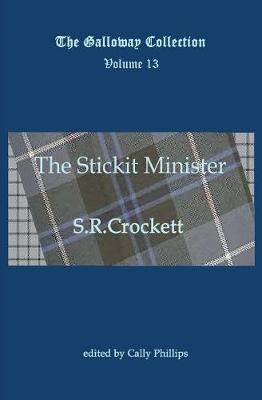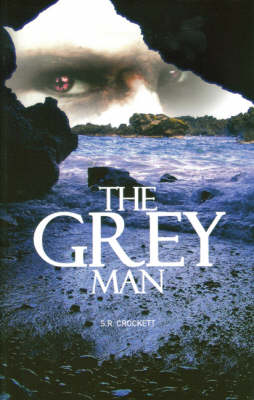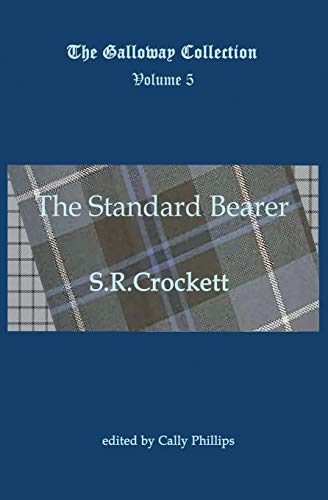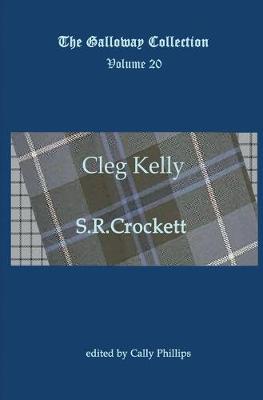The Kailyard authors
5 total works
In The Men of the Moss-Hags, S.R. Crockett takes as his theme the persecution of the Covenanters in seventeenth-century Scotland, a favourite subject of Scottish historical novelists. Steeping himself in the documentary sources and oral traditions of 'The Killing Time', Crockett weaves a thrilling adventure romance, carrying the reader off with him on a perilous journey across the moss-hags - the peaty bogs of the Galloway moorland. With a new introduction by Richard D. Jackson, which outlines Crockett's rivalry over the subject with Robert Louis Stevenson, as well as his treatment of sources and the publishing history of the novel, this edition restores to print a work which, like Scott's Old Mortality, Hogg's The Brownie of Bodsbeck and Galt's Ringan Gilhaize, captures the sufferings and torments of Scotland's blood-swept past. Richard D. Jackson is a graduate of the University of St Andrews.A former schoolteacher, HM Inspector of Schools and retired senior administrative civil servant, he co-edited The Forest Minstrel for The Collected Works of James Hogg, contributes regularly to Studies in Hogg and his World and has published essays in other journals on Walter Scott, John Buchan and Philip Larkin.
Originally published in 1893, this novel was among the best-selling works of fiction of the decade. Set mostly in Galloway, in the south west of Scotland, these spirited tales offer an entertaining blend of wry humour, subtle pathos and social observation, told in energetic prose and vigorous Scots. This edition, with a new introduction by Andrew Nash, restores to print one of the key works of late nineteenth-century popular literature by one of Scotland's most successful and undervalued authors.
The Grey Man is a fast-paced adventure romance set in Ayrshire, Scotland, in the reign of James VI. Written when S.R. Crockett was at the height of his power and popularity as a novelist, the story deals with the violent feud between the Kennedys of Cassillis and the Kennedys of Bargany and introduces some of his most memorable characters drawn from local folklore. The fearsome grey-clad figure of John Mure of Auchindrayne and the legendary cannibal, Sawny Bean, stalk the canvas of a novel that captures the turbulence of Scottish history. With a new introduction that draws on unpublished material to trace Crockett's composition of the story and his transformation of historical sources, this edition offers an authoritative text of this once popular work which topped the best-seller charts of 1896. Richard D. Jackson is a graduate of the University of St Andrews. A former schoolteacher, HM Inspector of Schools and retired senior administrative civil servant, he co-edited The Forest Minstrel for The Collected Works of James Hogg, contributes regularly to Studies in Hogg and his World and has published essays in other journals on Walter Scott, John Buchan and Philip Larkin.
The Standard Bearer is one of S.R. Crockett's Covenanting tales and a work that lay close to his heart. Dedicated to 'the Good and Kindly Folk of my native parish of Balmaghie', the story is set at the turn of the eighteenth century and takes its inspiration from the life of a rebel minister of Galloway. The Rev. John Macmillan was deposed for upholding the ancient Standard - the Blue Banner of the Covenant which asserted the rights of the Kirk of Scotland to govern its own affairs. On the loom of Scottish history the author weaves an episode that he himself describes as 'iron grey and wintry' but in which love and vigorously painted Galloway characters form an adventurous and colourful pattern. With an introduction that sets out the historical background and provides an illuminating insight into Crockett's own life and working methods, this new edition restores to print one of his most neglected and tautly-constructed novels. -- Richard D. Jackson is a graduate of the University of St Andrews.
A former schoolteacher, HM Inspector of Schools and retired senior administrative civil servant, he co-edited The Forest Minstrel for The Collected Works of James Hogg, contributes regularly to Studies in Hogg and his World and has published essays in other journals on Walter Scott, John Buchan and Philip Larkin.
A former schoolteacher, HM Inspector of Schools and retired senior administrative civil servant, he co-edited The Forest Minstrel for The Collected Works of James Hogg, contributes regularly to Studies in Hogg and his World and has published essays in other journals on Walter Scott, John Buchan and Philip Larkin.
When Cleg Kelly was first published, William Wallace in the 'Academy' declared it 'out of sight the ablest and richest story of gamin life that has appeared in our time - the story that recalls most readily Oliver Twist and The Hunchback of Notre Dame.' Set partly in Edinburgh, the author draws on his student experiences as a missionary worker to paint a vivid, realistic picture of slum life in the capital through the eyes and adventures of Cleg Kelly, 'Arab of the City'. Written immediately after the author resigned from his position as Minister in the Free Church of Scotland, the novel sets the natural Christian impulses of its rebellious boy hero against religious hypocrisy and the cruelty and mistreatment of children. Blending urban and rural realism with gothic mystery, the story confirmed Crockett's position as one of the leading novelists of his day. This edition includes adetailed introduction by Richard D.Jackson which draws extensively on archival evidence to reveal the biographical contexts of the novel and Crockett's sources and processes of composition, allowing readers a richly-informed approach to a novel that explodes the myths of the Kailyard and, in the words of Wallace, 'shows most clearly that Crockett has the supreme story-teller's gift of a vigorous, resourceful and genuinely creative imagination'.
